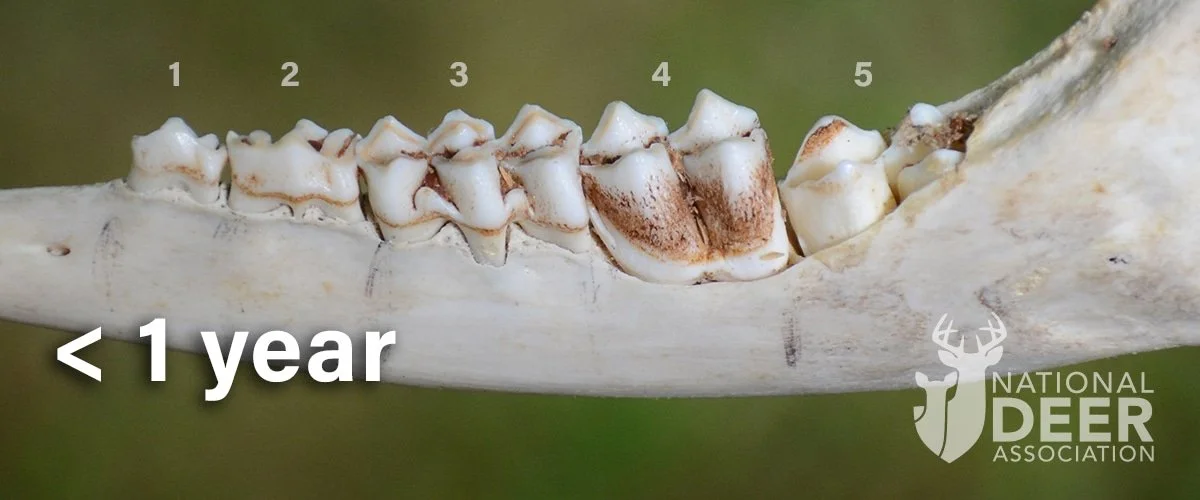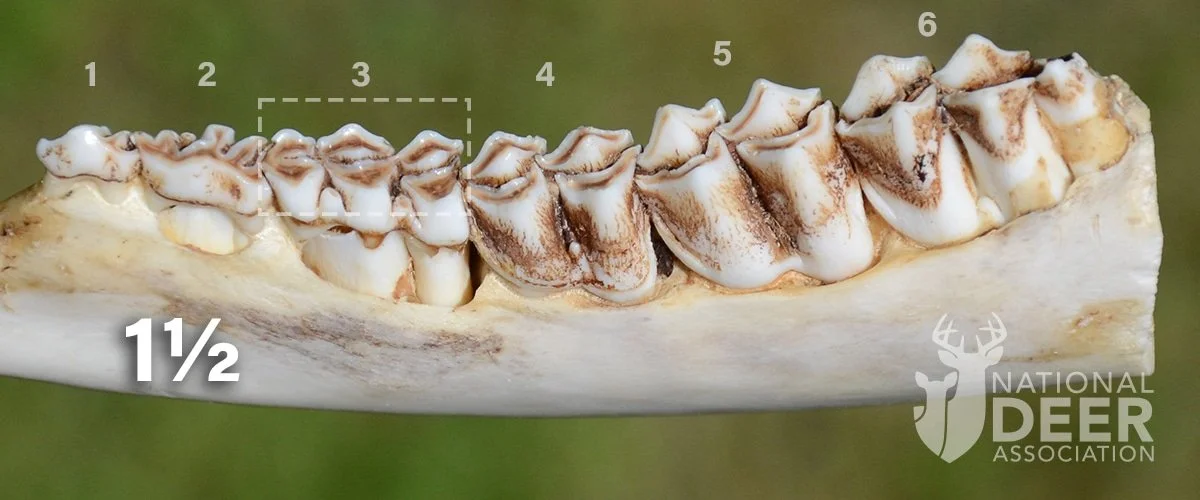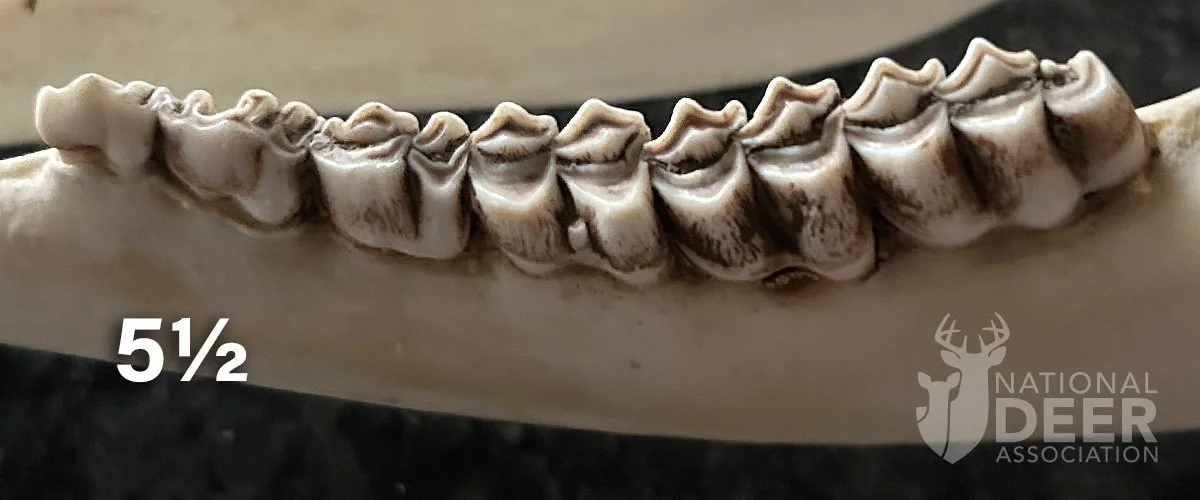How to Age Whitetail Deer by Teeth: The Science, History, and Management Power of the Severinghaus Method
“You can’t manage what you can’t measure.”
When it comes to whitetail management, few statements ring truer.
Aging deer accurately is one of the most powerful tools a land manager or wildlife biologist can use. Whether you manage a few hundred acres or a multi-thousand-acre property, understanding the age structure of your herd is the foundation of long-term success.
Among all the methods developed over the decades, none has proven more reliable than aging deer by their teeth — a process first standardized by wildlife biologist C.W. Severinghaus in 1949. His method remains the gold standard for classifying deer by age class, evaluating herd health, and guiding harvest decisions.
The History of Tooth-Based Aging in Whitetail Deer
In 1949, C.W. Severinghaus published his groundbreaking paper “Tooth Development and Wear as Criteria of Age in White-Tailed Deer” in the Journal of Wildlife Management.
By studying hundreds of known-age deer, he discovered two predictable biological patterns:
Tooth Replacement — the consistent eruption of permanent teeth in young deer.
Tooth Wear — the progressive flattening and dentine exposure that increases with age.
This simple, cost-effective method gave wildlife agencies, university researchers, and private land managers a reliable, repeatable system for identifying deer age classes in the field — one still used today across North America.
The Science Behind Why Tooth Aging Works
Whitetail deer have 32 permanent teeth: three premolars (P1–P3) and three molars (M1–M3) on each side of the lower jaw.
Each tooth tells a biological story through eruption timing and wear rate, which are shaped by diet, habitat, and genetics.
Eruption Phase (0–2½ years): Deer replace “milk” premolars with permanent ones on a fixed schedule.
Wear Phase (3½+ years): As deer age, the enamel (white, hard) wears away, exposing darker dentine (brown, soft).
Predictable Ratios: The balance of enamel vs. dentine — and the rounding of each cusp — creates a reliable signature of age.
Studies show that trained biologists can accurately classify deer up to 4½ years old more than 80% of the time using this approach.
For older deer, cementum annuli analysis — counting seasonal growth rings in the tooth root — provides even greater precision.
How to Age Deer by Teeth (Severinghaus Method)
Here’s how to identify each age class using the classic Severinghaus tooth-wear and replacement technique.
Fawn (< 1 Year Old)
Only 4–5 cheek teeth visible.
Third premolar (P3) has three cusps.
Molars not yet erupted.
1½ Years (Yearling)
All six cheek teeth visible.
P3 still has three cusps (deciduous).
M3 newly erupted, sharp, and unworn.
2½ Years
P3 replaced by a two-cusped adult tooth.
M3 fully erupted and sharp.
M1 and M2 show light brown dentine in center of cusps.
3½ Years
M1 and M2 show moderate dentine wear; dentine width roughly equals enamel width.
M3 still sharp and prominent.
4½ Years
M1 and M2 dentine wider than enamel.
M3 beginning to flatten; inner crests starting to round.
5½ Years and Older
All molars heavily worn.
Dentine dominates the chewing surface.
Cusps flattened or cupped, and the jawbone shows visible age rounding.
Why Harvesting Only Mature Bucks (5½+ Years) Strengthens Your Herd
Aging deer by teeth does more than document a harvest — it defines your management philosophy.
Properties that base harvest strictly on age class (not antler points) consistently see stronger genetics, healthier does and fawns, and more stable rut behavior.
1. Full Genetic Expression
Bucks reach their true genetic and skeletal potential between 5½ and 7½ years. Harvesting earlier removes top-end genetics before they’re expressed.
2. Natural Selection Restored
Allowing bucks to mature lets the strongest, most adapted males dominate breeding — spreading those traits naturally across generations.
3. Reduced “High-Grading”
When hunters remove the largest young bucks, they unintentionally remove superior genetics.
An age-based harvest plan prevents that.
4. Social Balance
Older bucks stabilize the rut, regulate dominance behavior, and maintain breeding order — leading to synchronized conception and healthier fawn crops.
Research from the Mississippi State University Deer Lab and Quality Deer Management Association shows that properties enforcing age-class harvest policies see measurable improvements in average antler size, body weight, and herd balance within five years.
Implementing an Age-Class Management Strategy
Collect Jawbones: Save and label every harvested jaw.
Train & Calibrate: Compare your samples against regional known-age references.
Record & Analyze: Track average harvest age, antler metrics, and body weights each season.
Set Clear Policies: Protect bucks under 5½ years; selectively harvest only mature age classes.
Validate With Labs: Send samples to DeerAge.com for cementum annuli verification.
The Whitetail RX Takeaway
A deer’s teeth are a permanent record of its life — every bite tells a story.
By mastering the Severinghaus method, managers gain a deeper biological understanding of their herds and the confidence to make long-term, data-driven decisions.
When you manage for age class instead of inches, you build stronger genetics, better balance, and a sustainable future for your herd and habitat.
At Whitetail RX, we believe that great management doesn’t start with antlers — it starts with biology.
Sources
Severinghaus, C.W. 1949. Tooth Development and Wear as Criteria of Age in White-Tailed Deer. J. Wildlife Management 13:195-216.
Texas Parks & Wildlife. Aging Deer by Tooth Wear and Replacement.
Clemson University Extension. A Key for Aging White-Tailed Deer Using the Tooth Replacement and Wear Technique.
Mississippi State University Extension. Using Antler Restrictions to Manage for Older-Aged Bucks. 2019.
University of Tennessee Extension. Considering Antlers and Estimating Live Age of Bucks. 2020.
Oklahoma State University Extension. Quality Deer Management in Oklahoma. 2020.
National Deer Association Photo Archives, DeerAge.com.








